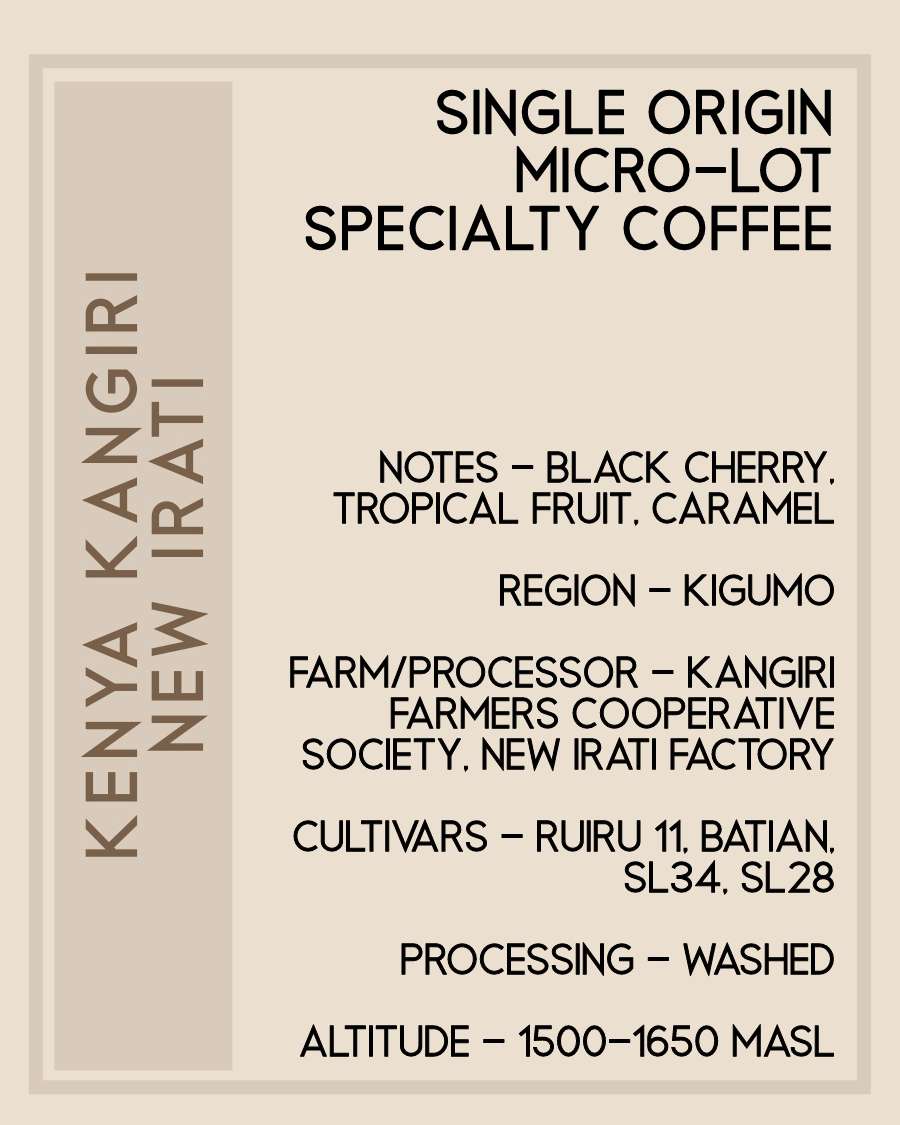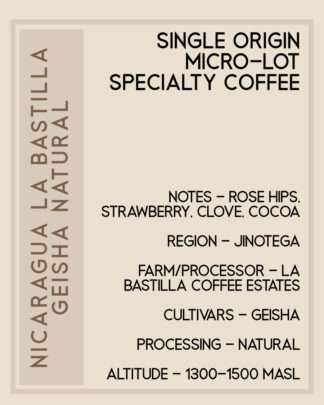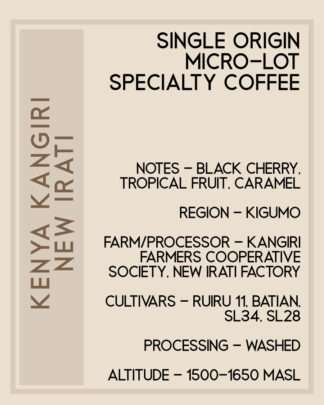A fruit-forward Kenyan, big-bodied and complex, with background floral and sweet caramel notes. Lighter roasts highlight the bright acidity for which Kenyan coffees are renowned, while bumping up the roast level reveals more complex caramelized sugars.
The New Irati Factory was established in the 1970s, joining four other mills that serve the Kangiri Farmer’s Cooperative Society. Today, New Irati works with over 600 smallholders with roughly 150 hectares of land under coffee. The factory produces around 190 metric tons of cherry annually, collected from farms situated on rich volcanic soil of Murang’a County.
Producers handpick ripe cherries in the early morning and transport them to the wet mill, where the cherries are spread out for sorting. Clean water is poured into the de-pulper, which removes the outer fruit of the cherries between two rotating abrasive slabs. The de-pulped beans then sink into the fermentation tank, where they are left overnight to allow the mucilage to break down.
The next day, the wet mill manager checks the fermentation tanks and decides to proceed with processing based on the “feel” of the fermented parchment. As the washed beans spill into the washing channels, producers repeatedly push the coffee with wooden shunts to sort the beans by density. The denser, higher-quality beans are then left to sun-dry on raised beds until they reach a moisture content of 10-12%.
Although Kenya and Ethiopia share a border, their coffee histories diverge significantly. French missionaries introduced coffee to Kenya in 1893, leading to the establishment of large coffee estates. Until 2006, green coffee from Kenya could only be traded through the national auction system, but new legislation has since allowed producers to sell directly to buyers, transforming the industry.
Kenya’s coffee production has maintained its reputation for quality and consistency through meticulous management at the washing stations. Nationwide, over 600,000 smallholder farmers are organized into Farmer Cooperative Societies (FCS), which play a crucial role in overseeing traceability and quality control for their members.
Kenyan green coffee beans are renowned for their bold, fruit-forward flavors and complex acidity. Among the most celebrated varietals are SL-28 and SL-34, developed by Scott Agricultural Laboratories (hence, SL) in the 1930s for their drought resistance, exceptional cup quality, and high yield at elevated altitudes. Following a coffee berry disease (CBD) epidemic in 1968, the CBD-resistant Ruiru-11 varietal was introduced and quickly adopted nationwide. In 2010, the Coffee Research Institute (CRI) developed Batian, another resistant varietal prized for its tall, hardy growth and manageability by smallholders.





Reviews
There are no reviews yet.